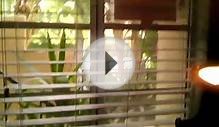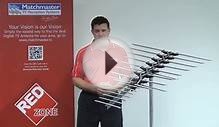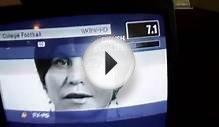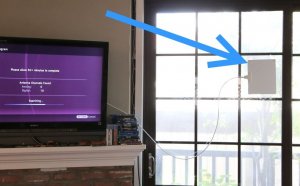
TV Antenna reception
The initial CATV systems carried just three channels, which paired or exceeded the sheer number of TV programs locally for sale in the outlying places where cable got begun. Because of the end of 1950s, however, cable technology had enhanced to the stage in which 12-channel methods had been prevalent. Cable business owners used these extra networks and microwave relay methods to import transmitted signals from distant areas. By expanding system option in this way, cable operators had the ability to boost costs and attract more consumers. Cable business owners in addition saw a way to create "cable-only" channels by getting programming legal rights from motion picture studios and activities franchises. Cable operators after that could charge clients a premium for use of these "pay television" channels, over the monthly registration charge for just what came to be referred to as "basic tier" of broadcast channels.
The first forays into pay-tv had been vigorously opposed by movie theater proprietors and also by advertising-supported tv broadcasters. Film studios, scared of alienating theater owners and broadcasters, their biggest consumers, generally were unwilling to present pay-tv providers with programming. The Federal Communications Commission (FCC), concerned that pay TV would divert visitors and therefore undermine ad-supported broadcasting stations, promulgated a number of regulations that retarded the rise of pay TV. As a result, early efforts to build up pay-tv had been unsuccessful.
The FCC's opposition to cover TV was consistent with an extensive reversal of their plan toward cable that started throughout the late l950s. Through the majority of that ten years, the Commission had followed a laissez-faire stance toward cable, in the reasons so it lacked jurisdiction throughout the industry, and therefore, regardless, expanding the reach of broadcast indicators served the general public interest. Because of the late l950s, however, it was impossible the FCC to ignore the enmity that cable TV had been creating from broadcasters. television place owners asserted that cable providers' importation of remote indicators reduced their viewers. Stations whose indicators were imported complained that cable providers profited from their particular development without having to pay because of it. The FCC, dedicated to establishing a robust neighborhood broadcasting industry, initially intervened to limit a cable operator's actions in Carter hill case of 1959, with regards to denied the Riverton, Wyoming cable company authorization to import remote broadcasters' indicators. Following the Carter hill choice survived court difficulties, the FCC formalized its guidelines in regards to the importation of broadcast signals. In 1966, the Commission needed cable operators running into the 100 largest television areas (where 87 per cent associated with the U.S. populace after that existed) to acquire formal permission—which hardly ever ended up being granted—before importing distant signals.
The FCC's constraints may have slowed cable's growth into metropolitan markets, although overall price of growth for the industry really accelerated during belated sixties. The total wide range of houses subscribing to cable expanded at a compound yearly rate of 30 % between 1966 and 1970, and reached 4.5 million at the end of that period. By contrast, the substance annual growth rate in readers for the 1961 to 1965 duration had been 15 %, as well as for 1955 to 1960 ended up being 21 %. Cable's quick development throughout the belated 1960s ended up being spurred by high profits. Typical cable methods outside the top 100 markets gained rates of return on net investment (before fees and interest expense) over 40 percent.
RELATED VIDEO



Share this Post
Related posts
HDTV antenna reception
No-cost Over-The-Air (OTA) HDTV is distributed by regional broadcasters via radio waves from huge broadcast transmitter towers…
Read MoreIndoor TV antenna reception
Step 1. Enter Address below: for some correct Results go into the Street Address, City and State where you will put in it…
Read More










